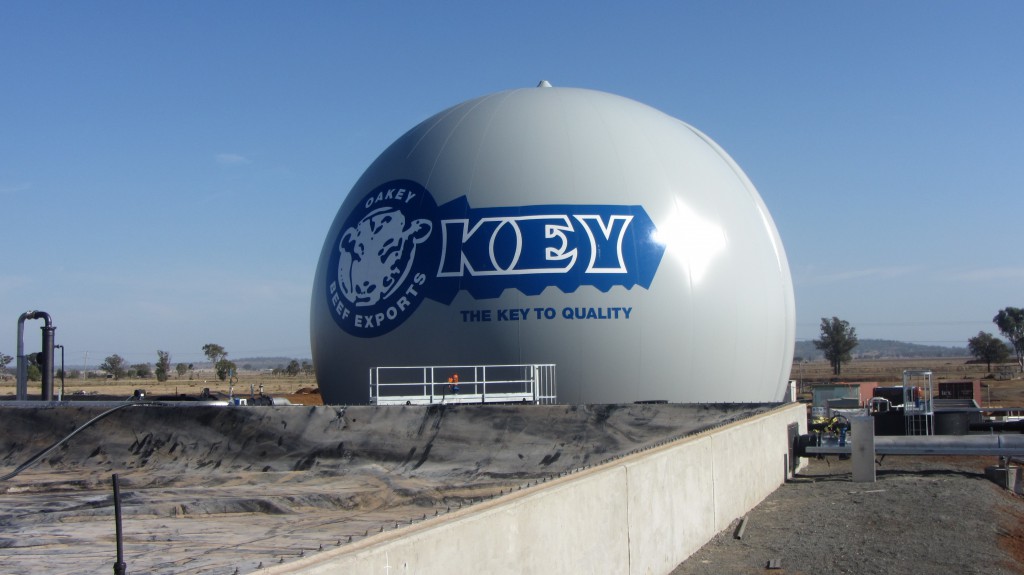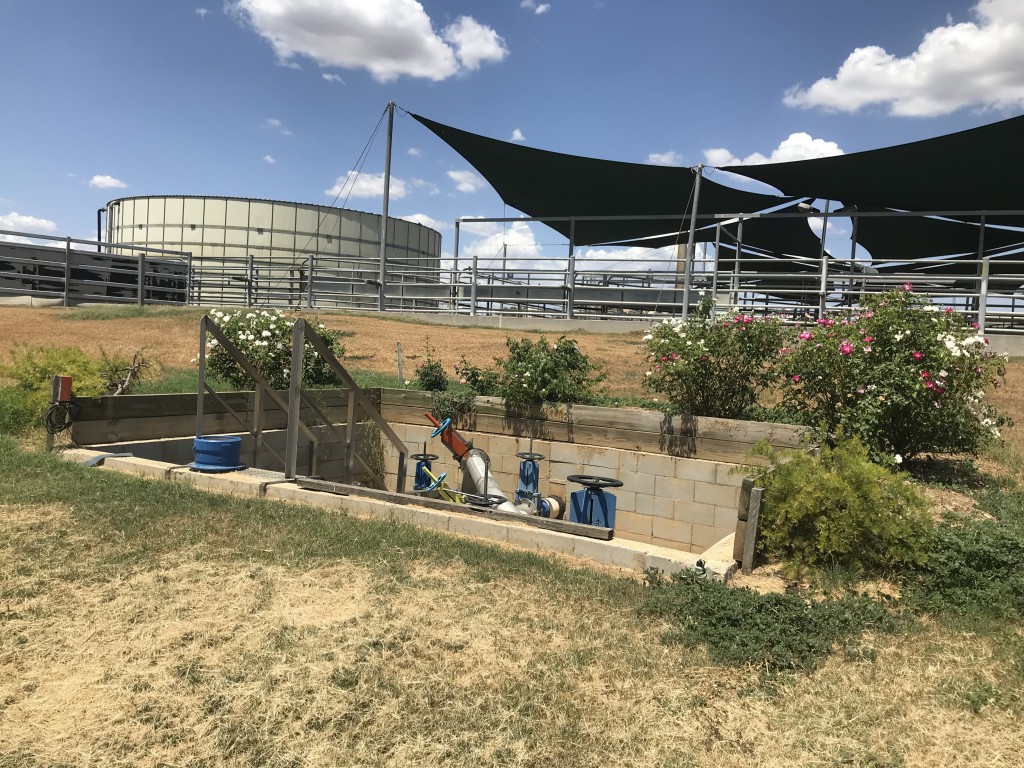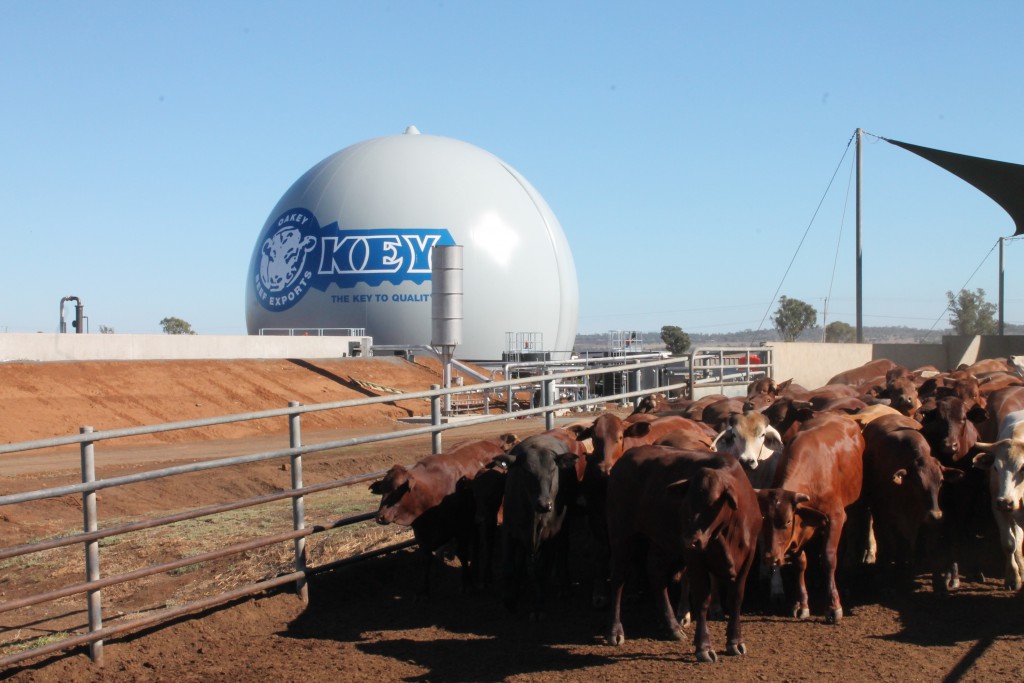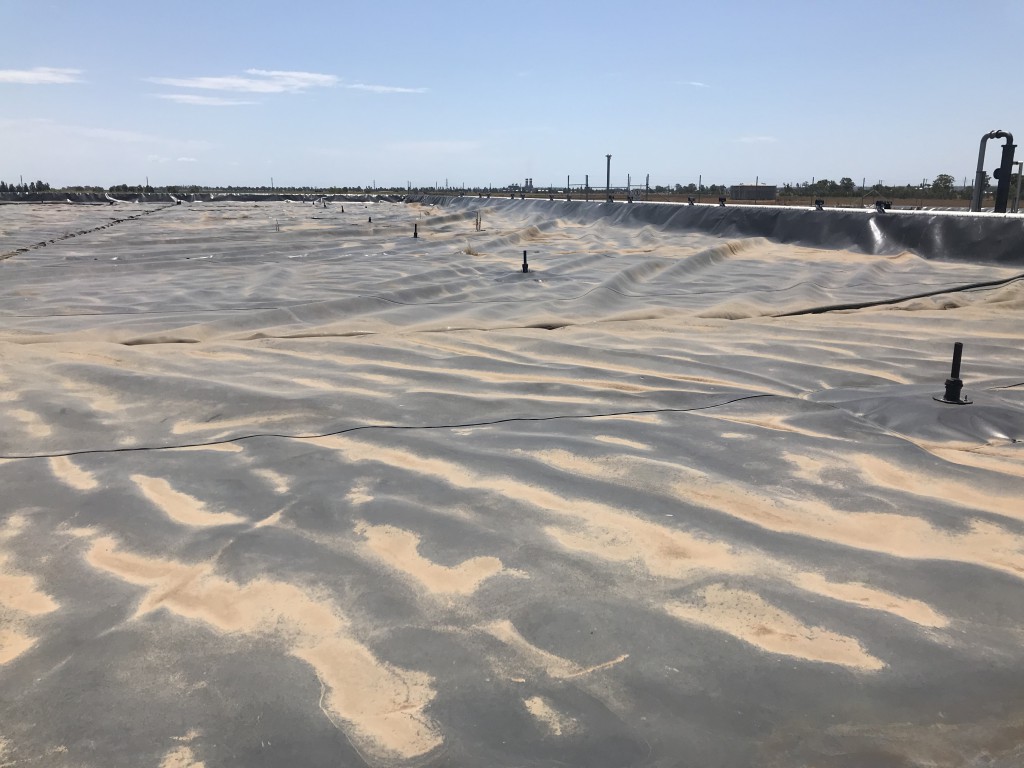Biogas in a balloon lifts clean green environmental and business performance at world-first NH Foods Australia plant
A far-sighted green energy initiative made by the leading meat processor NH Foods Australia at their Oakey Beef Exports facility is paying handsome dividends in terms of cleaner wastewater effluent, as well as a reduced fossil fuel environmental footprint and lower energy costs.
The Global Water & Energy (GWE) COHRAL™ (Covered High-Rate Anerobic Lagoon) plant was installed at Oakey by Australian environmental engineering and green energy authority CST Wastewater Solutions, which recently inspected the plant as it approaches its landmark fifth year of service in southern Queensland.
It found the clean, compact and robust plant is in outstanding condition, having required only routine maintenance over that time as it continuously produces 3000-4000 m3 of biogas a day, depending on plant throughput. The generated biogas is directly used in the plant’s existing boiler replacing natural gas. This leads to replacement of fossil fuels and sharpened cost-efficiencies at a time they are most needed during the current Australia-wide drought.
The anerobic digestion plant extracts green energy biogas from Oakey Beef Export’s wastewater streams to replace millions of dollars worth of natural gas over its operating life, in Queensland’s Darling Downs region.
Instead of effluent being stored in energy-costly and extensive aerated lagoons used by many food and beverage business – with associated environmental, OH&S hazard, water and odour issues – waste at Oakey is converted to biogas by a clean, green and reliable anaerobic digestion process applicable to any food, beverage or primary processing plant with an organic waste stream.
The compact GWE COHRAL™ plant involved occupies just half the footprint of comparable covered anaerobic lagoons and a much smaller space required by typical energy-hungry and odorous open aeration lagoons in service globally, says CST Wastewater Solutions Managing Director Michael Bambridge.


The clean operating environment of the GWE COHRAL™ plant, top, and the garden-like operating area in front of the WWTP, bottom
The necessary pretreatment prior to the GWE COHRAL™ system lead also to better recoveries of valuable protein and fats which would normally end up in the wastewater.
This could be classified as an indirect benefit to the bottom line as well as increasing reliability by isolating clogging waste from the high performance WWTP (Waste Water Treatment Plant), says Mr Bambridge.
“By transforming a wastewater effluent treatment and disposal problem into an ongoing productive asset, the plant has achieved a rare business and environmental ideal of cleaner, greener performance with stable, predictable and profitable supplies of biogas.
“The wind doesn’t need to blow and the sun doesn’t need to shine to produce this green energy – it is a highly viable renewable in its own right, which complements the many excellent solar and wind energy sources suited to other projects. Ultimately, the plant will pay for itself with biogas then go on to produce virtually free energy for many years after that,” said Mr Bambridge.
“Right now, the Oakey plant is delivering cost-efficiency benefits at a time when they are most needed, when the plant has to operate efficiently while coping with herd reductions resulting from the drought. Its success is clearly demonstrating the value in service of a technology that is widely applicable to the food, beverage and primary processing industry.”
The Oakey plant is designed to produce biogas (primarily methane) which is stored for use in a 6000m3 capacity flexible PVC-coated polyester storage balloon from which biogas is drawn to fuel the boiler.
The new plant simultaneously delivers high quality wastewater by extracting organic content, which it converts into methane to replace fossil fuels. The GWE technology involved removes 80-90 per cent of organic waste content, to give cleaner effluent while also reducing odours.


The gas balloon, top, and the robust lagoon cover, bottom, under which anaerobic bacteria convert waste to biogas which is then stored in the balloon.
“Oakey Beef Exports is one of the most modern meat works in Australia and one of the country’s largest beef export plants.
“Operating in a global market, as a premium exporter to 34 countries, means its manufacturing processes need to be respectful, sustainable and efficient,” says Mr Bambridge.
The installation there of GWE COHRAL™ technology deploys for the first time in Australia the covered lagoon with the widely proven GWE anaerobic technology used in more than 300 reactor (tank) installations worldwide.
